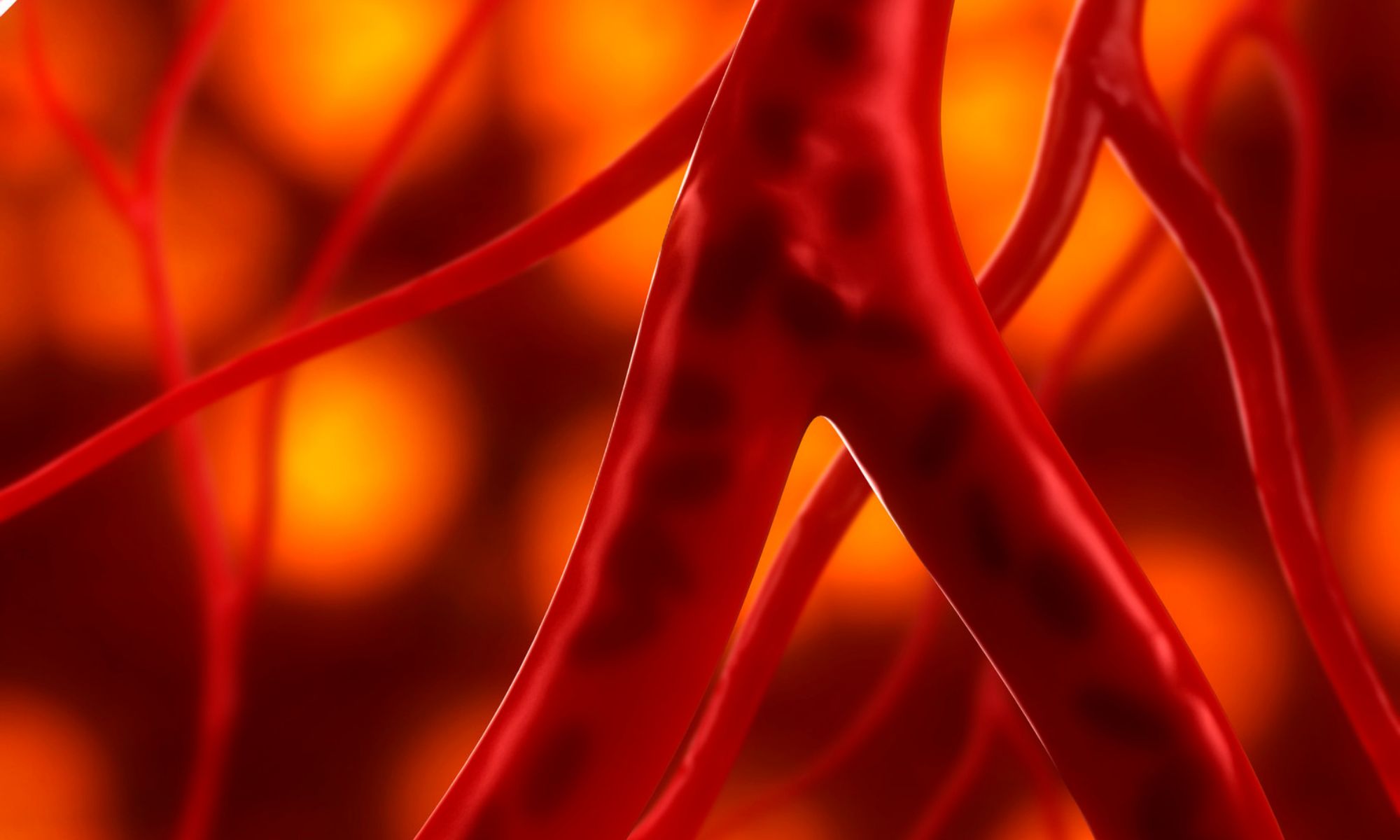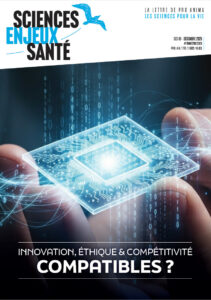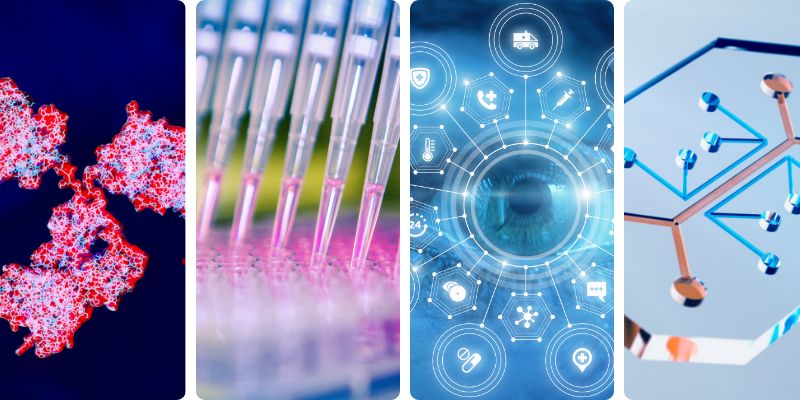
News on non-animal methods
SEPTEMBER 22 - 26, 2025
NEWS, REPORTS & POSITION STATEMENTS
1. Top 5 Must-Read Articles on AI-Powered On-Chip Systems
AI is colliding with organoids, organs-on-chips, and digital-twin models, and reshapes how we discover, test, and de-risk new therapies. The OOC company Canchip has curated essential papers that show how human-relevant microphysiology and machine learning can boost translational accuracy, cut reliance on animal studies, and push precision medicine from concept to clinic.
The selected articles show clear frameworks, real use cases, and an honest look at what’s still hard: standardization, reproducibility, and regulatory uptake, so R&D, tox, and data teams can move from promise to practice.
Discover the top 5 must read articles
2. NIH landmark project on whole-person health and function
The National Institutes of Health (NIH) has launched an effort to advance research on whole-person health and create an integrated knowledge network of healthy physiological function.“Biomedical research is largely organized around the study of specific organs and diseases. In contrast, we do much less research on health itself, which is an integrated process involving the whole person,” said Helene M. Langevin, director of NIH’s National Center for Complementary and Integrative Health, leader of the NIH-wide program.
The five-year research initiative will proceed in several stages, drawing from existing scientific knowledge to develop a complete working model of healthy human physiology. It will build on the NIH Human Reference Atlas and the Human BioMolecular Atlas Program (HuBMAP) to connect the complex anatomy and function of the body’s different organs and systems into a single “map.”
3. US-UK pact: Boosting advances in drug discovery
As part of the US President’s State Visit, the UK and US have agreed on the Tech Prosperity Deal, focused on developing the fastest growing technologies like AI, quantum, and nuclear. This comes as America’s top technology and AI firms – like Microsoft, NVIDIA, Google, OpenAI and CoreWeave – commit a combined £31 billion to boost the UK’s AI infrastructure and cutting-edge tech. This could see both countries working together to build new AI models for life-changing breakthroughs like developing targeted treatments for those suffering with cancer or rare and chronic diseases.
Although the Department for Science, Innovation and Technology (DSIT) recognises the possibilities of embracing innovative technologies, Dylan Underhill, Cruelty Free International Head of Public Affairs (UK & EU) emphasized in a recent post the need to see alignment across government to ensure regs are kept up to date to facilitate new approaches and avoid entrenching outdated models like animal testing.
Read more about the US-UK Pack
INTERVIEWS, NOMINATIONS & AWARDS
4. Award winners at the ASPIS Open Symposium 2025
ASPIS (Animal-free Safety assessment of chemicals: Project cluster for Implementation of novel Strategies) has announced the winners of this year’s ASPIS Open Symposium 2025 Best Poster Awards in Athens.
Each award highlights outstanding research contributions from their three EU-funded sister projects — ONTOX, PrecisionTox, and RISKHUNT3R — that are shaping the future of animal-free safety assessment. The Awards were handed over by Mathieu Vinken, the ONTOX project leader and coordinator of the ASPIS cluster for the years 2024 – 2026.
TOOLS, PLATFORMS, CALLS
5. EC’s review of models used in cardiovascular research
The EU Science, Research and Innovation JRC ECVAM is bringing together experts and evidence to improve research outcomes in cardiovascular research, reduce animal experiments and promote non-animal approaches. This thematic review is the first of its kind to be undertaken by the European Commission (EC) in implementing EU legislation on the protection of animals used for scientific purposes. The review will also feed into the new European Research Area (ERA) action on ‘new approach methodologies’ proposed by the Commission in its recently published Life Science Strategy.
Call for experts: The review will be supported by a sub-group of the EURL ECVAM Scientific Advisory Committee (ESAC). The JRC is calling for experts to join this group who have in-depth knowledge of one or more fields of cardiovascular research, significant experience with applying models and methods in research studies, and a well-established profile supported by peer-reviewed publications in reputable scientific journals. Deadline for applications: Nov. 14, 2025.
Call for evidence: The JRC is also seeking scientific evidence to inform the review and is calling on researchers and stakeholders knowledgeable in the field to submit relevant information. Contributions can be submitted through the dedicated EU Survey, by 31 December 2025.
6. Transforming chemicals risk assessment decision-making
In recent years, the landscape of chemical risk assessment and regulatory decision-making has been rapidly evolving in response to increasing demands for efficiency, transparency, the integration of advanced methodologies and large volumes of data. Tools, platforms and emerging strategies are incorporating innovative approaches, such as new approach methodologies (NAMs) and data-driven decision workflows, to streamline the process; reshaping the future of chemical risk assessment and enhancing the ability of regulatory bodies to make informed, transparent, and reproducible decisions.
Among these new platforms:
RapidTox decision-support workflows are designed by toxicologists and computational scientists to provide access to data for specific decision-contexts. The workflows provide access to existing human health toxicity values and associated effects metadata extracted from dozens of sources, including NAMs modules such as analog-based read-across and bioactivity-based points-of-departure.
ASPA (Alternative Safety Profiling Algorithm), a broad-purpose, transparent, and reproducible risk assessment workflow allows documentation and integration of all types of information required for NGRA. ASPA aims to make safety assessments fully traceable, delineating which steps and decisions have led to the final outcome, and why certain decisions were made. An overarching objective of ASPA is to ensure that identical data input yields identical outcomes in the hands of independent assessors.
7. Practical Guide: Methodological considerations for human-relevant in vitro Nanotoxicology
Nanotoxicology is a rapidly evolving field dedicated to assessing the safety and potential hazards of nanomaterials on human health. A practical guide has been developed outlining essential methodological considerations for designing human-relevant in vitro nanotoxicology experiments.
A primary focus is placed on the comprehensive characterization of the nanomaterial in question, as properties such as size, shape, surface charge, and solubility significantly influence biological activity. The guide discusses the selection of appropriate in vitro models, including various cell sources, to ensure relevance to human exposure scenarios. It also emphasizes accurate practices for nanomaterial sample preparation and the importance of dosimetry, facilitating the translation of in vitro findings to realistic human exposure conditions.
SCIENTIFIC DISCOVERIES & PROTOCOLS
8. UCLA: Findings on epilepsy genes using stem cell models
For families of children with severe epilepsy, controlling seizures is often just the beginning of their challenges. Even in cases where powerful medications can reduce seizures, many children continue to face difficulties with learning, behavior and sleep that can be just as disruptive to daily life. Using patient-derived induced pluripotent stem cells, new research from UCLA provides an early step toward understanding why current treatments often fall short.
The study, which generated 3D assembloids of two key brain areas: the cortex and the hippocampus, focuses on developmental and epileptic encephalopathy type 13, or DEE-13, a rare childhood condition caused by certain variants in the SCN8A gene. Children with DEE-13 experience frequent seizures as well as developmental delays, intellectual disability, and autism spectrum disorder. The results revealed strikingly different effects depending on the brain region.
Read the article in Cell Reports
9. Liver cancer: A novel embolization-on-a-chip model to test various embolic agent classes
Embolization of blood vessels is a widely used treatment for liver cancer. However, embolization therapies are optimized in animal models, which often differ from humans at the cellular, tissue, and organ levels.Dr. Vadim Jucaud’s lab at the Terasaki Institute has developed a human vascularized liver cancer-on-a-chip model to evaluate vessel remodeling and cell death in response to embolic agents. This novel platform reflects the microenvironment of liver tumors, particularly a functional and perfusable microvasculature that can be embolized.
“By integrating functional blood vessels into a liver cancer-on-a-chip system, we can replicate the unique vascular dynamics that drive hepatocellular carcinoma growth and response to embolic therapies, something traditional cell cultures and animal models cannot achieve,” said Dr. Huu Tuan Nguyen, first author of the publication. This powerful in vitro tool aligns with the National Institutes of Health (NIH) efforts to reduce animal testing and promote alternative methods, including microfluidic devices that mimic human organs.
Read the publication in IOP Science
WORTH (RE)SHARING
Large language models for data extraction in toxicology: implications and lessons learned from the clinical evidence domain
by Lena Schmidt et al. on Evidence-Based Toxicology
Beyond Animal Testing: Why Human-Relevant Models Are the Next Biotech Frontier
by Eckhard von Keutz on Linkedin
UPCOMING WEBINARS, WORKSHOPS, SYMPOSIA
Oct. 30, Utrecht: Human Measurement Models Program Day 2025


